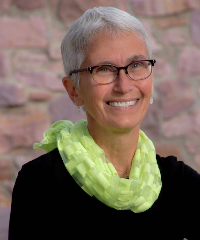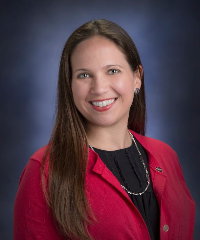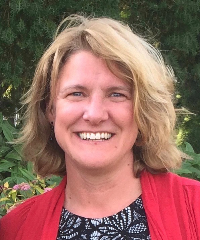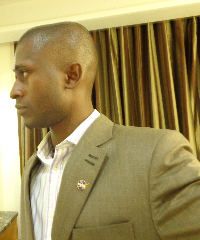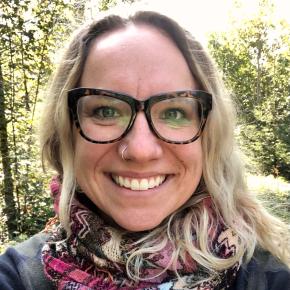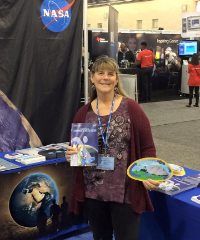Community Blogs
Community Blogs
Discover how the GLOBE community is engaging in all things GLOBE through the community blog posts below.
Learn how to create a GLOBE community blog post.
Filter By:
Blogs List
I currently have four traps in operational order. Two at one of my AOIs and two in backyard that were prototypes that I've left up because they seem to be performing admirably. I My traps have been up for about a week, the prototypes were deployed a day before the other two, and I haven't seen any mosquitos or mosquito larvae. I did take care to note that I used dog food in my trap, specifically the dry kibble variant instead of ones that come in chunks or are wet. I choose dog food over decomposed plant-based organic material because I noticed that the few times I've accidentally ...
Read More »
Posted in:
GLOBE Science Topics:
EARTH AS A SYSTEM
EARTH SYSTEM SCIENCE
Investigation Areas:
EARTH AS A SYSTEM
MOSQUITOES
Primary Audience:
STUDENTS
TEACHERS
Student Research Reports:
INTERNATIONAL VIRTUAL SCIENCE SYMPOSIUM REPORT
MISSION MOSQUITO REPORT
The NASA GLOBE Clouds Quarterly Update is available for September/October/November 2022!
Match to a Million Satellite Matches Celebration
Thanks to you, The GLOBE Program has reached one million satellite observations matched to your cloud reports! Share in the celebration and thank you videos made just for you.
GLOBE Clouds New Satellite Matching: NOAA-20
The NASA GLOBE Clouds team will soon be adding NOAA-20 to our satellite matching capabilities. Learn more about NOAA-20 and updates to the GLOBE Clouds satellite matching schedule.
Meet an Expert: Naudia Graham ...
Posted in:
Curriculum:
SCIENCE AND MATH
GLOBE International STEM Network (GISN):
GLOBE INTERNATIONAL STEM NETWORK (GISN)
GLOBE Science Topics:
BACKYARD SCIENCE
CLIMATE
CLIMATE CHANGE
GLOBE PROTOCOLS
EARTH AS A SYSTEM
Investigation Areas:
ATMOSPHERE
CLOUDS
Teachers of Kindergarten to Grade 2 can use stories and observations of nature outside your door to help students understand how the systems of Earth (atmosphere, biosphere, hydrosphere, and pedosphere) are connected.
Start by reading the Elementary GLOBE story “ All About Earth: Our World on Stage ” to get an overview of some of the connections between the components of the Earth. The story follows a classroom of students as they prepare a play to learn how Earth’s processes are interconnected and how living creatures interact with those processes. [One 30- to 45-minute class ...
Posted in:
Curriculum:
SCIENCE AND MATH
GLOBE Science Topics:
BACKYARD SCIENCE
GENERAL SCIENCE
EARTH AS A SYSTEM
EARTH SYSTEM SCIENCE
SCIENTIST SKILLS
Investigation Areas:
EARTH AS A SYSTEM
BIOSPHERE
Learning Activities:
EARTH AS A SYSTEM
EARTH SYSTEM IN A BOTTLE
WE'RE ALL CONNECTED: EARTH SYSTEM INTERACTIONS
EARTH SYSTEM PLAY
Primary Audience:
STUDENTS
TEACHERS
My involvement in the Stem Enhancement in Earth Science (SEES) program started sometime around early spring 2021. The involvement was preceded by a strong recommendation from Dr. Kevin Czajkowski, PI, GLOBE Mission Earth, The University of Toledo.
Indeed, to me as a member of the GLOBE International STEM Network (GISN), my participation in SEES became an opportunity to invoke the GISN mandate which includes to mentor and inspiring ...
Posted in:
Curriculum:
ASSESSMENT AND EVALUATION
EDUCATION RESEARCH
SCIENCE AND MATH
TECHNOLOGY
STEM
Diversity, Equity, and Inclusion:
DIVERSITY, EQUITY, AND INCLUSION
Field Campaigns:
WATERSHEDS
SMAP
SURFACE TEMPERATURE
GPM
GLOBE Science Topics:
EARTH AS A SYSTEM
Investigation Areas:
ATMOSPHERE
HYDROSPHERE
PEDOSPHERE (SOIL)
BIOSPHERE
Learning Activities:
EARTH AS A SYSTEM
Primary Audience:
PARTNERS
SCIENTISTS
STUDENTS
Blog Contributors: Denise "Skye" Yost - GIO and Matthew Rodell - NASA
World Water Day (WWD) is right around the corner on 22 March 2022! WWD began in 1993 by the United Nations to celebrate freshwater, and bring awareness to use and conservation of freshwater resources across the globe.
This year, the theme for WWD is Groundwater. Groundwater is often misunderstood because it is not seen easily, unlike rivers, lakes, ponds, or oceans. But, groundwater plays a very important role in freshwater sources, specifically in providing moisture for plants to grow, and water for animals ...
Posted in:
Curriculum:
STEM
GLOBE Science Topics:
DATA INCLUDED
GLOBE PROTOCOLS
EARTH AS A SYSTEM
Learning Activities:
EARTH AS A SYSTEM
HYDROLOGY
LAND COVER/BIOLOGY
SOIL
Did you know that clouds can both warm and cool our planet? Keeping an eye on clouds helps NASA study our climate. You can notice some of these changes by just looking at the clouds.
Here are some examples you might have already noticed:
Do all clouds cast shadows? Low thick clouds tend to cast the most shadows. The shadows show you how the cloud is blocking the light from the sun from reaching the ground. This is similar to you placing your hand in front of your eyes when it is too sunny. Your hand is blocking the light from reaching your eyes. This is the same as the ...
Posted in:
Curriculum:
SCIENCE AND MATH
STEM
GLOBE Science Topics:
BACKYARD SCIENCE
CLIMATE
CLIMATE CHANGE
GENERAL SCIENCE
GLOBE PROTOCOLS
EARTH AS A SYSTEM
SCIENTIST SKILLS
Investigation Areas:
ATMOSPHERE
Primary Audience:
ALUMNI
COUNTRY COORDINATORS
PARTNERS
SCIENTISTS
STUDENTS
TEACHERS
TRAINERS
Did you know that NASA's Earth-observing satellites gather data that is being used by people all over the world to help respond to a variety of challenges? The 2022 GLOBE International Virtual Science Symposium is focusing on "Engineering Solutions for a Changing Climate". In this blog, I will share some information about the ways that Faisal Hossain, a Civil and Environmental Engineering Professor at the University of Washington, is using engineering and solving environmental issues through engineering solutions.
Faisal Hossain grew up in Bangladesh where he ...
Posted in:
Curriculum:
SCIENCE AND MATH
TECHNOLOGY
STEM
Diversity, Equity, and Inclusion:
DIVERSITY, EQUITY, AND INCLUSION
Field Campaigns:
SEASONS AND BIOMES
WATERSHEDS
SMAP
GPM
GLOBE Science Topics:
BACKYARD SCIENCE
CLIMATE
CLIMATE CHANGE
DATA INCLUDED
GENERAL SCIENCE
GLOBE PROTOCOLS
EARTH AS A SYSTEM
EARTH SYSTEM SCIENCE
SCIENTIST SKILLS
MEETINGS/CONFERENCES
GLOBE Working Groups:
EDUCATION WORKING GROUP
Investigation Areas:
ATMOSPHERE
HYDROSPHERE
EARTH AS A SYSTEM
PEDOSPHERE (SOIL)
BIOSPHERE
Learning Activities:
ATMOSPHERE AND CLIMATE
EARTH AS A SYSTEM
HYDROLOGY
LAND COVER/BIOLOGY
SOIL
News Topics:
COMPETITIONS
SCRC RESEARCH
VIRTUAL SCIENCE FAIR
Primary Audience:
ALUMNI
COUNTRY COORDINATORS
PARTNERS
SCIENTISTS
STUDENTS
TEACHERS
TRAINERS
Student Research Reports:
STANDARD RESEARCH REPORT
INTERNATIONAL VIRTUAL SCIENCE SYMPOSIUM REPORT
U.S. STUDENT RESEARCH SYMPOSIA (SRS)
MISSION EARTH REPORT
MISSION MOSQUITO REPORT
Teacher's Guide:
STANDARDS REQUIREMENTS
GRADE LEVELS
INVESTIGATION AREA DOCUMENTS
Background
Remote working and remote learning presented challenges to us all. As a Master Trainer in Colombia, Juan Felipe Restrepo Mesa faced and overcame his share of challenges when working with a new group of educators from rural areas. Most of the training material and the tests that need to be answered were in English. This, of course, means that citizen scientists who do not speak English were prevented from making their contributions living in those areas where GLOBE Observer Mosquito Habitat Mapper's contributions are essential.
Juan Felipe had to set up a MEET ...
Posted in:
Diversity, Equity, and Inclusion:
DIVERSITY, EQUITY, AND INCLUSION
GLOBE Science Topics:
EARTH AS A SYSTEM
EARTH SYSTEM SCIENCE
Investigation Areas:
HYDROSPHERE
LAND COVER CLASSIFICATION
MOSQUITOES
Primary Audience:
COUNTRY COORDINATORS
PARTNERS
SCIENTISTS
TEACHERS
TRAINERS
Red-vented Bulbul's Nesting Cycle
Introduction:
"Birds are a miracle because they show us that there is a finer, simpler state of being that we can strive for"
And the red-vented bulbul ( Pycnonotus cafer ) demonstrated this reality by nesting inside our house. She used to observe each of us, attaining an understanding of our lifestyles, and then trust us as she was concerned about predators such as cats in the neighbourhood posing a threat to her nest.
In the beginning, she was just roaming around the house looking for a safer place, and ...
Posted in:
Curriculum:
EDUCATION RESEARCH
SCIENCE AND MATH
GLOBE Science Topics:
BACKYARD SCIENCE
GENERAL SCIENCE
EARTH AS A SYSTEM
SCIENTIST SKILLS
GLOBE Working Groups:
SCIENCE WORKING GROUP
EDUCATION WORKING GROUP
Investigation Areas:
EARTH AS A SYSTEM
BIOSPHERE
Learning Activities:
EARTH AS A SYSTEM
Primary Audience:
ALUMNI
COUNTRY COORDINATORS
PARTNERS
SCIENTISTS
STUDENTS
TEACHERS
TRAINERS
Every time you take a cloud observation, the NASA GLOBE Clouds team matches your observation to satellite data. Why do we do this? Your view of clouds is from a different perspective than what is observed from a satellite. Satellites look down at clouds and see the top. When you make your observation, you are looking up towards the sky and seeing the bottom of the clouds. When there is a match, scientists then have a top-down view of clouds from a satellite and a bottom-up view from your spot. When you mix these two views together, you have a more complete picture of the sky. ...
Posted in:
Curriculum:
EDUCATION RESEARCH
SCIENCE AND MATH
STEM
GLOBE Science Topics:
BACKYARD SCIENCE
CLIMATE
CLIMATE CHANGE
DATA INCLUDED
GENERAL SCIENCE
GLOBE PROTOCOLS
EARTH AS A SYSTEM
EARTH SYSTEM SCIENCE
SCIENTIST SKILLS
Investigation Areas:
ATMOSPHERE
EARTH AS A SYSTEM
News Topics:
REGIONS
Primary Audience:
ALUMNI
COUNTRY COORDINATORS
PARTNERS
SCIENTISTS
STUDENTS
TEACHERS
TRAINERS
The NASA GLOBE Clouds team highlights cloud observers Hilde Fålun Strøm (Norway) and Sunniva Sorby (Canada), who created Hearts In The Ice to call attention to all the rapid changes occurring in the polar regions due to the changing climate. These citizen scientists made history last year by being the first women to overwinter solo in the high Arctic. They spent 12 consecutive months without running water or electricity at a remote trappers cabin called “Bamsebu” in Svalbard, Norway. While they were there, they made numerous GLOBE cloud observations as ...
Posted in:
Curriculum:
LANGUAGE CULTURE AND ARTS
STEM
GLOBE Science Topics:
BACKYARD SCIENCE
CLIMATE
CLIMATE CHANGE
DATA INCLUDED
GENERAL SCIENCE
EARTH AS A SYSTEM
EARTH SYSTEM SCIENCE
SCIENTIST SKILLS
GLOBE Working Groups:
SCIENCE WORKING GROUP
EDUCATION WORKING GROUP
Investigation Areas:
ATMOSPHERE
EARTH AS A SYSTEM
News Topics:
COMMUNITY LETTERS
NEWS BRIEFS
Primary Audience:
ALUMNI
COUNTRY COORDINATORS
PARTNERS
SCIENTISTS
STUDENTS
TEACHERS
TRAINERS
The NASA GLOBE Clouds team is continuously working with scientists around the world finding ways that cloud observations from citizen scientists impact the most. As we find new ways of using the data, we want to remind you how important each part of your cloud report is to the scientific community. All cloud observations can help with big questions such as the link between clouds and climate. Dr. Patrick Taylor is an atmospheric scientist at NASA Langley Research Center in Hampton, Virginia. In the Clouds and Earth’s Climate video , Patrick discusses how he studies clouds to ...
Posted in:
Curriculum:
ASSESSMENT AND EVALUATION
EDUCATION RESEARCH
SCIENCE AND MATH
STEM
GLOBE Science Topics:
BACKYARD SCIENCE
CLIMATE
CLIMATE CHANGE
GENERAL SCIENCE
GLOBE PROTOCOLS
EARTH AS A SYSTEM
EARTH SYSTEM SCIENCE
SCIENTIST SKILLS
GLOBE Working Groups:
SCIENCE WORKING GROUP
EDUCATION WORKING GROUP
Investigation Areas:
ATMOSPHERE
EARTH AS A SYSTEM
Learning Activities:
ATMOSPHERE AND CLIMATE
News Topics:
COMMUNITY LETTERS
NEWS BRIEFS
Primary Audience:
ALUMNI
COUNTRY COORDINATORS
PARTNERS
SCIENTISTS
STUDENTS
TEACHERS
TRAINERS
Student Research Reports:
STANDARD RESEARCH REPORT
Teacher's Guide:
INVESTIGATION AREA DOCUMENTS
Each cloud observation submitted using the GLOBE Observer app or through The GLOBE Program is compared to data from multiple satellites. A satellite match is when satellite data is identified that corresponds to a cloud observation. For orbiting satellites the observation must be within 15 minutes before or after a satellite’s overpass. Geostationary satellites, like the GOES satellites, are always observing the same location. If you are in the United States, you are likely to get a satellite match to a GOES satellite. These satellites are sending data every 15 minutes. As long ...
Posted in:
Curriculum:
SCIENCE AND MATH
STEM
GLOBE Science Topics:
BACKYARD SCIENCE
CLIMATE
GENERAL SCIENCE
GLOBE PROTOCOLS
EARTH AS A SYSTEM
EARTH SYSTEM SCIENCE
SCIENTIST SKILLS
Investigation Areas:
ATMOSPHERE
EARTH AS A SYSTEM
News Topics:
COMMUNITY LETTERS
NEWS BRIEFS
Primary Audience:
ALUMNI
COUNTRY COORDINATORS
PARTNERS
SCIENTISTS
STUDENTS
TEACHERS
TRAINERS
The NASA GLOBE Clouds team at NASA Langley Research Center is working with NASA scientist Dr. Bill Smith to use GLOBE Cloud observations made by people just like you to solve the Terminator Problem!
Wait, what? Well, the Solar Terminator or twilight zone is that line that separates the daylit side of a planet from the dark night side. The image on the left is an example. It was taken from the International Space Station as it crossed the terminator on April 17, 2019 as it orbits 254 miles above the Gulf of Guinea on Africa’s mid-western coast.
...
Posted in:
Curriculum:
EDUCATION RESEARCH
SCIENCE AND MATH
TECHNOLOGY
STEM
GLOBE Science Topics:
BACKYARD SCIENCE
CLIMATE
CLIMATE CHANGE
DATA INCLUDED
GENERAL SCIENCE
GLOBE PROTOCOLS
EARTH AS A SYSTEM
EARTH SYSTEM SCIENCE
SCIENTIST SKILLS
Investigation Areas:
ATMOSPHERE
EARTH AS A SYSTEM
Learning Activities:
ATMOSPHERE AND CLIMATE
EARTH AS A SYSTEM
News Topics:
COMMUNITY LETTERS
NEWS BRIEFS
Student Research Reports:
STANDARD RESEARCH REPORT
INTERNATIONAL VIRTUAL SCIENCE SYMPOSIUM REPORT
U.S. STUDENT RESEARCH SYMPOSIA (SRS)
Ever wonder what it might be like to work for NASA? This year at the American Geophysical Union (AGU) Annual Meeting (kind of like a huge IVSS as it is virtual this year), NASA shared a wealth of resources to help anyone interested in working with or for NASA to "find their place"! Take a look at this site and explore the myriad of amazing opportunities and programs that exist for a wide variety of different audiences. These programs range from research and learning opportunities to being engaged by being a part of The GLOBE Program! So check out the " Find Your Place " ...
Posted in:
Curriculum:
EDUCATION RESEARCH
LANGUAGE CULTURE AND ARTS
SCIENCE AND MATH
TECHNOLOGY
STEM
Diversity, Equity, and Inclusion:
DIVERSITY, EQUITY, AND INCLUSION
Field Campaigns:
FLEXE
SCRC
SCUBANAUTS
SEASONS AND BIOMES
WATERSHEDS
CARBON CYCLE
GGIC
SCRC - PHASE 1
SCRC - PHASE 2
SMAP
EL NIÑO
SURFACE TEMPERATURE
GPM
GLOBE Science Topics:
BACKYARD SCIENCE
CLIMATE
CLIMATE CHANGE
DATA INCLUDED
GENERAL SCIENCE
GENERAL SCIENCE @ES
EARTH AS A SYSTEM
EARTH SYSTEM SCIENCE
SCIENTIST SKILLS
MEETINGS/CONFERENCES
GLOBE Working Groups:
EVALUATION WORKING GROUP
SCIENCE WORKING GROUP
EDUCATION WORKING GROUP
TECHNOLOGY WORKING GROUP
DEI WORKING GROUP
Investigation Areas:
ATMOSPHERE
HYDROSPHERE
EARTH AS A SYSTEM
PEDOSPHERE (SOIL)
BIOSPHERE
Learning Activities:
ATMOSPHERE AND CLIMATE
EARTH AS A SYSTEM
HYDROLOGY
LAND COVER/BIOLOGY
SOIL
News Topics:
MEETINGS
SCRC RESEARCH
TRAINING
VIRTUAL SCIENCE FAIR
Primary Audience:
ALUMNI
COUNTRY COORDINATORS
PARTNERS
SCIENTISTS
STUDENTS
TEACHERS
TRAINERS
Student Research Reports:
STANDARD RESEARCH REPORT
INTERNATIONAL VIRTUAL SCIENCE SYMPOSIUM REPORT
U.S. STUDENT RESEARCH SYMPOSIA (SRS)
MISSION EARTH REPORT
MISSION MOSQUITO REPORT
Teacher's Guide:
GRADE LEVELS
INVESTIGATION AREA DOCUMENTS
The newest satellite to monitor global sea level is ready for its journey into space. Sentinel-6 Michael Freilich, the latest in a series of spacecraft designed to monitor the global ocean, is scheduled to launch on Saturday, Nov. 21. Will you be watching?
Sentinel-6 Michael Freilich , the latest in a series of spacecraft designed to monitor our oceans, is scheduled to launch from Vandenberg Air Force Base in central California on Saturday, Nov. 21, 2020. The satellite will be followed in 2025 by its twin, Sentinel-6B. Together, the pair is tasked with extending our nearly ...
Posted in:
Curriculum:
EDUCATION RESEARCH
SCIENCE AND MATH
TECHNOLOGY
STEM
Diversity, Equity, and Inclusion:
DIVERSITY, EQUITY, AND INCLUSION
Field Campaigns:
SEASONS AND BIOMES
WATERSHEDS
EL NIÑO
GPM
GLOBE Science Topics:
CLIMATE
CLIMATE CHANGE
DATA INCLUDED
GENERAL SCIENCE
EARTH AS A SYSTEM
EARTH SYSTEM SCIENCE
SCIENTIST SKILLS
GLOBE Working Groups:
SCIENCE WORKING GROUP
EDUCATION WORKING GROUP
TECHNOLOGY WORKING GROUP
DEI WORKING GROUP
Investigation Areas:
ATMOSPHERE
WATER VAPOR
EARTH AS A SYSTEM
PRECIPITATION
WATER TEMPERATURE
GREEN-UP / GREEN-DOWN
LAND COVER CLASSIFICATION
Learning Activities:
S2: WHAT ARE SOME FACTORS THAT AFFECT SEASONAL PATTERNS?
S4: MODELING THE REASONS FOR SEASONAL CHANGE
S5: SEASONAL CHANGE ON LAND AND WATER
LC2: REPRESENTING THE STUDY SITE IN A DIAGRAM
LC3: USING GRAPHS TO SHOW CONNECTIONS
WE'RE ALL CONNECTED: EARTH SYSTEM INTERACTIONS
S3: HOW DO SEASONAL TEMP PATTERNS VARY AMONG DIFFERENT WORLD REGIONS?
WATER WALK
MODEL A CATCHMENT BASIN
PRACTICING YOUR PROTOCOLS
WATER DETECTIVES
MODEL YOUR WATER BALANCE
MEASURE UP
WATER WONDERS
Primary Audience:
ALUMNI
COUNTRY COORDINATORS
PARTNERS
SCIENTISTS
STUDENTS
TEACHERS
TRAINERS
Student Research Reports:
STANDARD RESEARCH REPORT
U.S. STUDENT RESEARCH SYMPOSIA (SRS)
MISSION EARTH REPORT
MISSION MOSQUITO REPORT
Santa Fe Indian School Café Scientifique presents Marilé Colón Robles, a NASA scientists to share how you can become a citizen scientist and help NASA
Learn how to do cloud observations with: Marilé Colón Robles, Project Scientist for NASA Globe Clouds
CLICK HERE TO REGISTER
Café Descriptio n:
Marilé Colón Robles, Project Scientist for NASA GLOBE Clouds Science Systems and Applications, Inc. will be presenting information about cloud and aerosol data that NASA uses and how you as a citizen scientist can help in the collection of this data.
Please register to the event ...
Posted in:
Curriculum:
EDUCATION RESEARCH
LANGUAGE CULTURE AND ARTS
SCIENCE AND MATH
STEM
GLOBE Science Topics:
BACKYARD SCIENCE
CLIMATE
CLIMATE CHANGE
GENERAL SCIENCE
EARTH AS A SYSTEM
EARTH SYSTEM SCIENCE
SCIENTIST SKILLS
Learning Activities:
ATMOSPHERE AND CLIMATE
News Topics:
CALENDAR
Primary Audience:
STUDENTS
septiembre/octubre/noviembre 2020
Nuevos recursos disponibles
Gracias a nuestra comunidad de nubes, el reto comunitario de nubes 2020 fue un gran éxito al mostrar cómo la ciencia es mejor juntos. Recibimos excelentes fotografías y obras de artes de los participantes, algunas de las cuales se destacaron en el video de agradecimiento.
Si no pudistes participar del reto o quieres seguir trabajando en él, visita la página de la guía para familias de nubes GLOBE para obtener los recursos. Encontrarás vídeos sobre la ciencias de nubes (inglés) y ...
Posted in:
Curriculum:
STEM
EDUCATION RESEARCH
SCIENCE AND MATH
Event Topics:
CAMPAIGNS AND PROJECTS (IOPS, ETC)
OTHER
COMPETITIONS
GLOBE Science Topics:
EARTH SYSTEM SCIENCE
GENERAL SCIENCE
GENERAL SCIENCE @ES
CLIMATE CHANGE
DATA INCLUDED
BACKYARD SCIENCE
CLIMATE
EARTH AS A SYSTEM
SCIENTIST SKILLS
GLOBE PROTOCOLS
Investigation Areas:
ATMOSPHERE
EARTH AS A SYSTEM
Learning Activities:
EARTH AS A SYSTEM
ATMOSPHERE AND CLIMATE
News Topics:
COMMUNITY LETTERS
Primary Audience:
PARTNERS
SCIENTISTS
ALUMNI
COUNTRY COORDINATORS
TRAINERS
TEACHERS
STUDENTS
Student Research Reports:
U.S. STUDENT RESEARCH SYMPOSIA (SRS)
INTERNATIONAL VIRTUAL SCIENCE SYMPOSIUM REPORT
STANDARD RESEARCH REPORT
Did you know that very soon, a new Earth-observing satellite will join the fleet of satellites that are monitoring the health of our home planet? The launch of the joint U.S.- European Sentinel-6 Michael Freilich satellite is set for November 10! Right now it is undergoing final testing at Vandenberg Air Force Base in California, and will be sent aloft on a Falcon 9 rocket. Once it is in orbit, about 1,336 km/830 miles above Earth's surface, its task will be to collect sea level measurements with an accuracy of a few centimeters (for a single measurement) for more ...
Posted in:
Curriculum:
STEM
SCIENCE AND MATH
TECHNOLOGY
Event Topics:
CAMPAIGNS AND PROJECTS (IOPS, ETC)
SCIENCE SYMPOSIA AND FAIRS
Field Campaigns:
SEASONS AND BIOMES
EL NIÑO
GPM
GLOBE Science Topics:
EARTH SYSTEM SCIENCE
CLIMATE
EARTH AS A SYSTEM
SCIENTIST SKILLS
GLOBE Working Groups:
EDUCATION WORKING GROUP
Investigation Areas:
ATMOSPHERE
EARTH AS A SYSTEM
News Topics:
CALENDAR
Primary Audience:
PARTNERS
SCIENTISTS
ALUMNI
TRAINERS
COUNTRY COORDINATORS
TEACHERS
STUDENTS
Student Research Reports:
U.S. STUDENT RESEARCH SYMPOSIA (SRS)
MISSION EARTH REPORT
INTERNATIONAL VIRTUAL SCIENCE SYMPOSIUM REPORT
September/October/November 2020
Cloud Challenge Resources Available
Thanks to our cloud community, the 2020 Community Cloud Challenge was a great success showing how Science is Better Together! We received some great photos and artwork from participants, some of which were highlighted in the thank you video .
If you missed the challenge or want to keep working on it, visit the GLOBE Clouds Family Guide page for the resources. You will find videos about the Science of Clouds and the Family Cloud Challenge page with a Choice ...
Posted in:
Curriculum:
STEM
EDUCATION RESEARCH
SCIENCE AND MATH
Event Topics:
CAMPAIGNS AND PROJECTS (IOPS, ETC)
OTHER
GLOBE Science Topics:
EARTH SYSTEM SCIENCE
GENERAL SCIENCE
GENERAL SCIENCE @ES
CLIMATE CHANGE
DATA INCLUDED
BACKYARD SCIENCE
CLIMATE
EARTH AS A SYSTEM
SCIENTIST SKILLS
GLOBE PROTOCOLS
GLOBE Working Groups:
EVALUATION WORKING GROUP
EDUCATION WORKING GROUP
TECHNOLOGY WORKING GROUP
SCIENCE WORKING GROUP
Investigation Areas:
ATMOSPHERE
EARTH AS A SYSTEM
Learning Activities:
EARTH AS A SYSTEM
ATMOSPHERE AND CLIMATE
News Topics:
IOPS
REGIONS
COMMUNITY LETTERS
NEWS BRIEFS
Primary Audience:
PARTNERS
SCIENTISTS
ALUMNI
COUNTRY COORDINATORS
TRAINERS
TEACHERS
STUDENTS
Student Research Reports:
INTERNATIONAL VIRTUAL SCIENCE SYMPOSIUM REPORT
STANDARD RESEARCH REPORT
—
20 Items per Page






